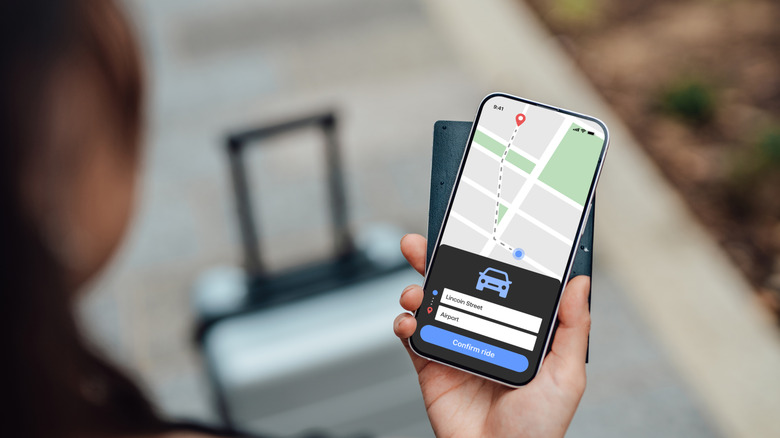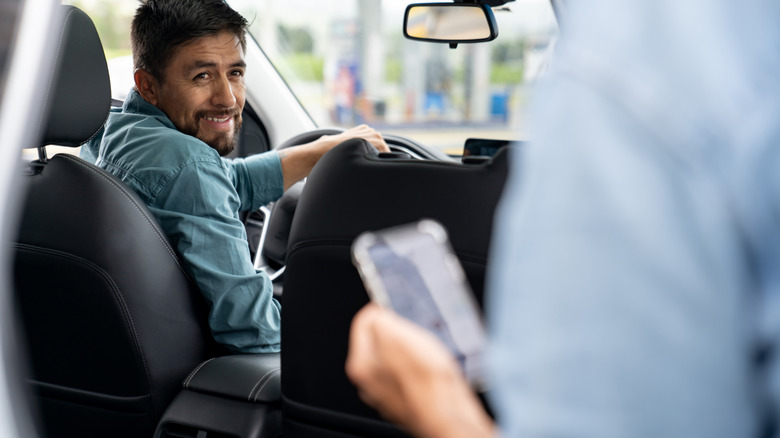The Most Common Reason Why Rideshare Drivers Cancel On You
Have you ever found yourself waiting patiently for an Uber to pick you up from the airport, watching the little animated car inch closer and closer to your location ... only for it to suddenly disappear with a cancellation notification that completely ruins your day? If you answered yes, you're not alone. Thankfully, Uber CEO Dara Khosrowshahi has officially cleared the air as to why so many drivers choose to inadvertently cancel a trip at the last minute — and it all boils down to destination preferences.
During an interview with CBS Mornings, Khosrowshahi admitted that the number one reason drivers on the app cancel a trip is because they simply don't want to go where you're heading. Whether it's a destination that's too far out of their way or an area they prefer to avoid, not knowing the final stop ahead of time significantly impacts their decision to cancel a ride after initially accepting — all of which ends up leaving frustrated passengers stranded and searching for alternatives.
What ride cancellations mean for riders
Frustrations and inconveniences aside, having your trip cancelled by a rideshare driver does more than just waste time — it also creates unnecessary stress and uncertainty, especially if you're using a rideshare app abroad for the first time. Because even though rideshare apps can help you save money while traveling — as well as help you avoid parking hassles, skip rental car fees, and ensure safe transport — there's no guarantee that you'll actually get to where you need to go. This is especially true if you have drivers constantly cancelling on you seemingly out of the blue.
Thankfully, Uber received a much-needed update in 2023 that allows drivers to actually see destinations before accepting rides in most locations — a helpful change that'll help them make more informed decisions about which rides they actually want to take. This, theoretically, should lead to less last-minute cancellations on the app, as well as a much better customer experience that doesn't leave users rideless.
That said, there are still instances where a driver might cancel on you despite already knowing (and agreeing to) your location. Some of these include things like a personal emergency that has come up unexpectedly, being unable to reach passengers who aren't responding to calls or messages, and riders with consistently low ratings from previous trips whether from being rude, damaging vehicles, or exhibiting problematic behavior.
How to improve your chances of getting a ride
Although the app's much-requested update was a win for drivers, the transparency can be a double-edged sword for riders. After all, users who need to travel to locations farther away, those who prefer to use the app during off-peak hours to avoid dealing with surge pricing, or anyone who lives in a less central location might get stuck with longer wait times — especially considering drivers can just choose to not accept the trip upfront.
That said, there are certain things you can do to help you secure a ride when and where you need it. For starters, planning ahead is key. Try scheduling your ride in advance for important trips, especially during busy periods or for longer journeys. Additionally, it's also worth being strategic about your pickup location — for example, think about choosing a more accessible spot in busy areas to increase your chances of finding a driver.
Another helpful approach is to keep multiple rideshare apps on hand. Since driver availability can vary significantly between platforms, having more options to choose from will significantly increase your chances of scoring a ride on a different platform. Lastly, for those less-popular routes or off-peak times, having a backup transportation plan ready can save you from getting stranded if you can't secure a rideshare.


